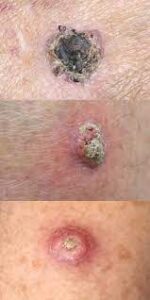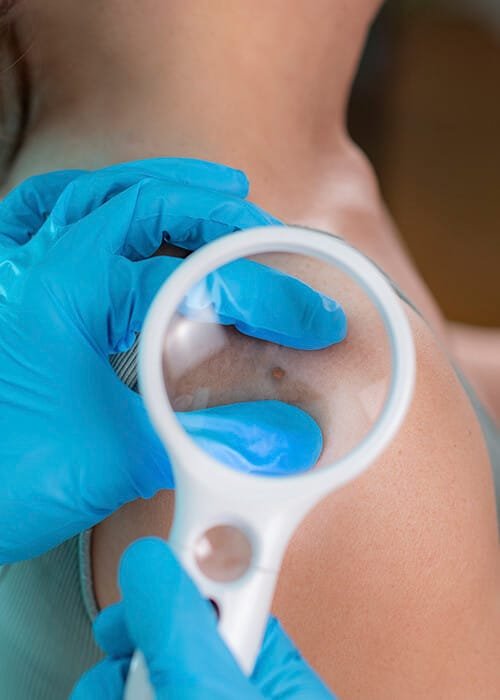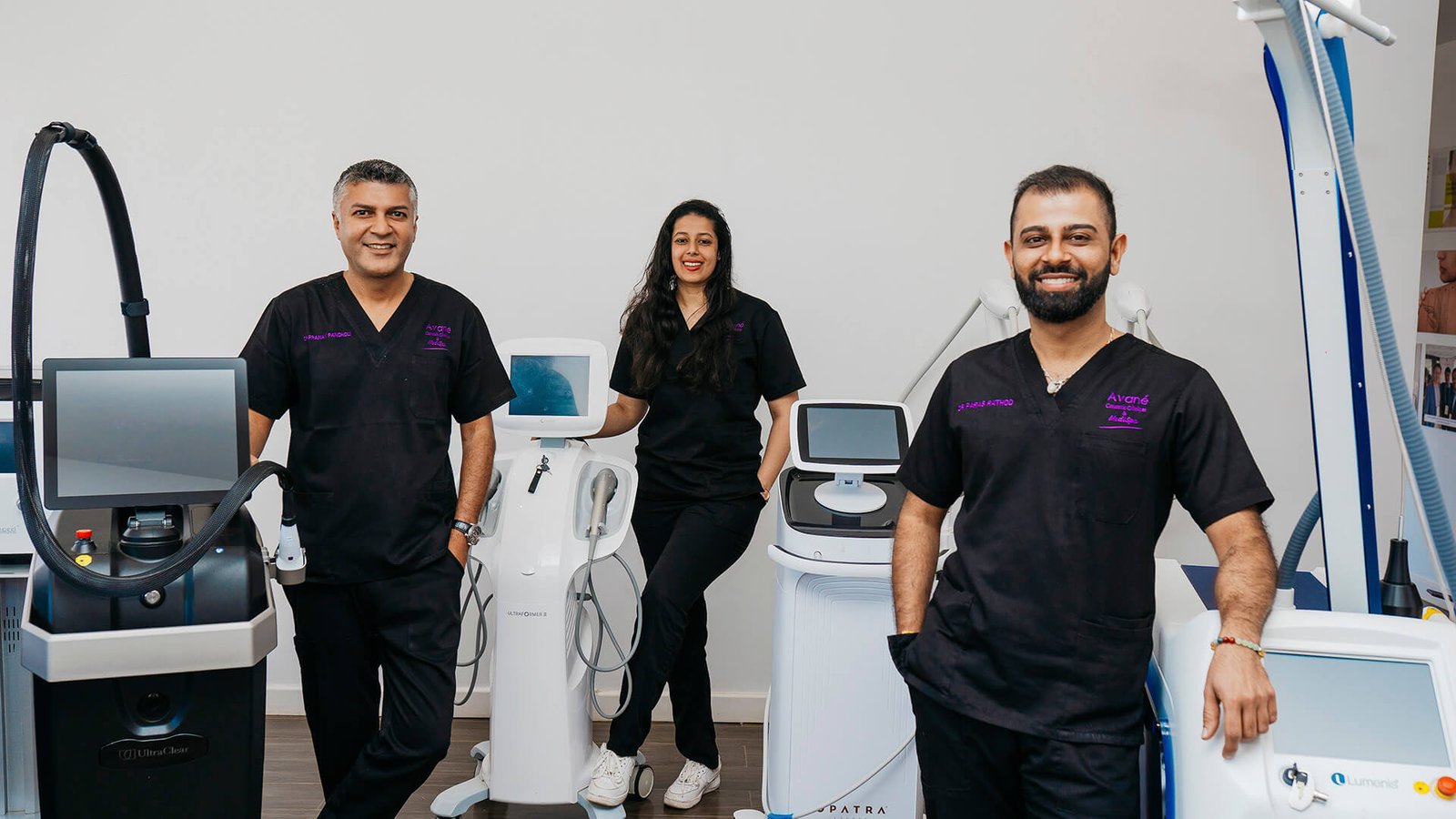For centuries, people have been affected by certain conditions that affect their health. There are various health hazards, some of which are dire, others mild and others harmless. Medical research has helped ease the way around their treatment. However, there are new conditions that keep popping up, due to our lifestyles, environmental conditions and other factors. In today’s world, cancer is one of the most dangerous conditions. It is among the leading causes of death, all across the world. In Kenya, cancer is the third leading cause of death, after infectious diseases and cardiovascular diseases. There are many forms of cancer which affect various body parts. These include lung cancer, skin cancer, breast cancer, prostate cancer, etc. The most common type of cancer is skin cancer. This discourse sheds some light on the enigma that is skin cancer.
Skin cancer is the most common type of cancer today. It is believed that about 1 in every 5 people will have suffered from skin cancer at some point in their life. This represents approximately 20% of the world’s population. Skin cancer is caused by alterations in the growth of cells in the skin. This is caused by a mutation in the skin cells, that make them reproduce rapidly beyond the normal rate. Skin cancer is mostly caused by overexposure to ultraviolet radiation, such as UV rays from the sun. Overexposure to other forms of UV-radiations can also cause skin cancer. It is, therefore, advisable that one avoids long-term exposure or repeated exposure to radiations such as X-rays.

Normally, new skin cells form when cells grow old and die or when they become damaged. When this process doesn’t work as it should, the rapid growth of cells results. Some of these cells may be abnormal. This collection of cells may be noncancerous (benign), or they may be cancerous. Benign cells don’t spread or cause harm. They are harmless. However, the cancerous cells may spread to nearby tissue or other areas in your body. Skin cancer can be easily treated and managed when it is discovered within its early stages. On the contrary, if not caught early and treated, it spreads to other parts, weakens your body and leads to early death.
Types of skin cancer.
There are three main types of cancer. they are mainly classified based on the type of cells they attack. These are:
Basal Cell Carcinoma (BCC)
This is a type of cancer that causes anomalies in the growth of basal cells in the epidermis. Basal cells are responsible for the production of new skin cells. BCC commonly affects areas that are exposed to sunlight. These include the face, ears, neck, scalp, shoulders and back. It can also affect other areas that are not frequently exposed to sunlight. Basal cell carcinoma is the most common type of skin cancer, with an estimated 8 out of 10 cases of skin cancer being BCCs. It forms on the skin as raised, pink or red, translucent and pearly bumps. They can easily be seen, though not easily identifiable. They are often mistaken for normal pimples. BCCs are more common in men, as compared to women. Furthermore, they also affect elderly people as compared to the younger generation. Furthermore, people with fair skin are at a higher risk of getting Basal Cell Carcinoma.

Squamous Cell Carcinoma (SCC)
Squamous Cell Carcinoma is the uncontrolled and abnormal growth of squamous cells in the skin. The Squamous cells are found just below the skin’s epidermis. They form the skin’s inner lining. SCC is the second most common type of skin cancer. It usually forms red, firm bumps and scaly patches of skin. They cause sores that heal and then re-open again. They are more common in people who have fair skin tones, but also affect people with darker skin tones. Squamous Cell Carcinoma is also caused by overexposure to UV radiation from the sun. Moreover, it also affects areas that are often exposed to sunlight. These include the face, ears, neck, arms, back and shoulders. Some of the abnormal squamous cells may grow deep into the skin, causing damage and disfigurements. SCCs grow slowly, which proves to be advantageous in their early treatment. Squamous cell carcinomas can also develop in scars or skin sores on any part of the body. These cancers are more likely to grow into deeper layers of skin and spread to other parts of the body.

Melanoma
Melanoma is the least common type of skin cancer. However, it is the most dangerous type, due to its high spread rate to other parts. It affects the melanocytes cells. Melanocyte cells are the cells in your body that are responsible for the production of melanin. They are located at the lower part of the epidermis. Melanoma also results from overexposure to sun radiation. This is because, the longer the exposure, the more melanin is produced by the melanocyte cells. It is meant to protect the inner layers, but it can turn to uncontrolled, cancerous growth. Melanoma can affect any part of the body, even those not usually exposed to sunlight. They however have to start from somewhere. These melanomas appear brown, back or tan. Melanoma often resembles moles on your skin. Moreover, it can also result from these moles. Just like any other type of cancer, early detection is crucial for treatment and management.

People with the highest risk of getting skin cancer
Although anyone can develop skin cancer, you’re at increased risk if you:
- Spend a considerable amount of time working or playing in the sun.
- Get easily sunburned; have a history of sunburns.
- Live in a sunny or high-altitude climate.
- Tan or use tanning beds.
- Have light-coloured eyes, blond or red hair and fair or freckled skin.
- Notice many moles or irregular-shaped moles.
- Have actinic keratosis (precancerous skin growths that are rough, scaly, dark pink-to-brown patches).
- Have a family history of skin cancer.
- Had an organ transplant.
- Take medications that suppress or weaken your immune system.
- Have been exposed to ultraviolet light therapy for treating skin conditions such as eczema or psoriasis.
Diagnosis of skin cancer
As mentioned earlier, early detection of skin cancer is very pivotal in its treatment. One should consider self-examination and regular screening of their skin to ensure that they spot any signs of skin cancer. you should consult your dermatologist or physician should you observe:
- Any changes to your skin or changes in the size, shape or colour of existing moles or other skin lesions.
- The appearance of new growth on your skin.
- A sore that doesn’t heal.
- Spots on your skin that are different from others.
- Any spots that change, itch or bleed.
The medical specialist will examine your skin, observing the affected areas and nearby skin. They may also ask you about the freckles or moles on your skin, and ask you to describe any changes on the freckles, moles etc. Should the specialist consider any of these lesions to be suspicious, he may request that you take a biopsy test. Here, a sample of skin cells is removed from the body for specialised medical observation. The specialist will then examine it and determine whether it is cancerous. In addition to this, he may recommend regular screening, especially for people with freckles and moles on their skin. One type of screening is through mole mapping. This help identify any new lesion that may grow and also helps keep track of any changes in the existing moles.
Treatment.
Skin cancer is treatable and easily manageable when it’s discovered early. Research shows that early detection and efficient treatment can help increase one’s lifespan by about 5 to 10 years. Treatment of skin cancer depends on the stage it is at. There are 4 stages, with stage 1 being the most easily treatable. The severity and spread of the disease increase as the stage number also increase. There are several methods of treatment, which can be used on their own or as a combination of methods. These include:
Cryotherapy- It’s a method of cancer treatment that uses liquid nitrogen to freeze skin cancer. The dead cells slough off after treatment. Precancerous skin lesions called actinic keratosis, and other small, early cancers limited to the skin’s top layer can be treated with this method.
Excisional surgery- This surgery involves removing the tumour and some surrounding healthy skin to be sure all cancer has been removed.
Moh’s surgery- It involves the removal of tissue affected by skin cancer. The visible, raised area of the tumour is removed first. Then the surgeon uses a scalpel to remove a thin layer of skin cancer cells. The layer is examined under a microscope after removal. Additional layers of tissue continue to be removed, one layer at a time until no more cancer cells are seen under the microscope. Mohs surgery removes only diseased tissue, saving as much surrounding normal tissue as possible. It’s most often used to treat basal cell and squamous cell cancers and near sensitive or cosmetically important areas, such as eyelids, ears, lips, forehead, scalp, fingers or genital area.
Chemotherapy and immunotherapy- Chemotherapy uses medications to kill cancer cells. Anticancer medications can be applied directly on the skin (topical chemotherapy) if limited to your skin’s top layer or provided through pills or an IV if the cancer has spread to other parts of your body. Immunotherapy uses your own body’s immune system to kill cancer cells.
Radiation therapy- Radiation therapy is a form of cancer treatment that uses radiation (strong beams of energy) to kill cancer cells or keep them from growing and dividing.
Photodynamic therapy- In this therapy, your skin is coated with medication and a blue or red fluorescent light then activates the medication. Photodynamic therapy destroys pre-cancerous cells while leaving normal cells alone.
Takeaway
As one of the leading causes of death in the world today, cancer sends shivers down our spines. Just the thought of it scares us, and it should. However, it can be treated and easily managed. Just like any other form of cancer, skin cancer can be treated when it is detected early and the right mitigation measures are taken. One should normalise self-examination and regular screening, to ensure early identification and treatment of skin cancer. Should you notice anything suspicious, it is advisable to visit a qualified specialist for help.
For the best specialist in the treatment of skin cancer, visit Dr Pancholi at Avané clinic, Nairobi. He is a highly qualified and competent specialist with years of experience and tons of knowledge in skin cancer. He also works with an equally competent and reliable team of medics who will partner with you in your fight against skin cancer. Avané clinic is located at the Yaya centre, in Nairobi. Visit us today to consult with our doctors, learn and start the right skin cancer treatment journey.




